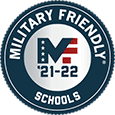Chances are, you’ve seen a tower crane before. It’s hard to miss.
Tower cranes are those big machines rising hundreds of feet in the air. Construction crews use them to lift steel, large tools, concrete, and more. Although you know what tower cranes look like, you may be curious about how this mystery machine operates.
Why doesn’t a tower crane tip over? How much weight can it lift? And how do they get bigger as buildings get bigger? These are just some of the many questions people have about construction cranes. In this article, we’ll give you a breakdown of tower cranes, how they operate, and crane training programs you can join.
What are tower cranes?
More thoroughly explained, a tower crane is a type of machine equipped with a hoist rope, chains, or sheaves, and used to lower, lift, and move heavy or bulk construction materials around.
The work of the tower crane is crucial. Without it, we wouldn’t be able to create such grand buildings and structures that we’ve grown to love. Because of tower cranes, we can build large establishments and landmarks in a viable, safe manner. Let’s take a look at the key parts of a tower crane.
Crane Parts
Generally, all tower cranes should have the same basic components.
Concrete Pad
For starters, the base of the crane is secured to a massive concrete pad using large bolts. This pad will support the crane and make it stable.
Mast
From there, the base is joined to the mast, also known as the tower. This is the larger tower part of the crane that reaches high into the air.
Slewing Unit
Attached atop the mast is the slewing unit. The slewing unit is composed of a large ring-gear and motor that enables the crane to rotate.
Jib
Connected to the slewing unit is the jib, also known as the boom. This is the long arm that extends out from the crane.
Machinery Arm
Extending out the opposite direction of the jib is the machinery arm. It is the shorter arm and contains large concrete counterweights that enable the arm to balance as it extends heavy material along the jib.
Operators Cab
The operators cab is located on the top of the slewing unit. This is where the crane professional carefully orchestrates the moving of materials.
Certified Crane Training - Get Certified in as soon as 3 weeks
How Much Weight Can Tower Cranes Lift?
Although tower cranes can lift and move massive loads at a time, this machine does have its limitations. Here’s a look at the lift specifications of a construction crane.
Maximum Unsupported Height – 265 feet (80 meters)
Maximum Reach – 230 feet (70 meters)
Maximum Lifting Power – 19.8 tons (18 metric tons)
Counterweights – 20 tons (16.3 metric tons)
Crane Transportation Process
For the crane transportation process, there are many things to consider when putting a tower crane together. Let’s take a look at the various parts of crane transportation.
Transportation Budget
The first thing to keep in mind is the Transportation Budget. The transporting of various tower crane components will require heavy hauling services, which naturally, incur additional expense.
Transportation Routes
Next up is Transportation Routes. Now that we have heavy hauling services for the tower crane parts, we will need to consider road restrictions. Certain road routes and travels are prohibited when hauling loads that are over a certain weight or dimension.
Transportation Schedule
In order to efficiently and safely transport tower crane equipment, you’ll need to coordinate a precise transportation schedule that ensures each tower crane part arrives on-site, on time, and in the order needed for assembly.
Erecting a Tower Crane
Now that you understand the crane transportation process, as the different crane components arrive, you’ll need to start erecting your tower crane.
First, the vertical mast is erected. This is done by using a lifting device, such as a crawler or mobile crane, to attach additional mast sections atop the base.
After you’ve secured additional mast sections until you’ve reached the desired height, the operators cab and turntable (the heaviest element of a tower crane) will then need to be placed on the top of the mast.
From there, the apex of the crane, also known as the tower top, is attached. The jib, or working arm, is attached to the turntable and will extend horizontally.
From there, a hoist & hook, which is a trolley mechanism, will be connected to the jib. This mechanism allows the jib to perform lifting.
Located behind the cab and in coordination with the working jib is the counter -jib. This function will have motors, counterweights, and electronics for the tower crane to operate. Lastly, to make the tower crane functional, ropes must be secured and attached to the working components.
How to Operate a Tower Crane
To operate a crane, a team of certified individuals will need to oversee the tower crane. The majority of crane functions will be coordinated from the operators cab at the top of the crane.
Each skilled team member will assume the role of certain crane operations. For example, the “person in charge” will be assigned an array of responsibilities including assessing risk and overseeing the overall lifting operation.
A “crane coordinator” will schedule the lifts, mitigate the sequence of the lifts, and prevent crashes from happening. A “signal person” will be the operator’s eyes and ears, using crane hand signals to communicate effectively to the operator the directions the load should be moved. With that said, the “crane operate” will operate the crane which includes lifting and positioning loads as directed by others.
Check out our other Interesting Articles Here..
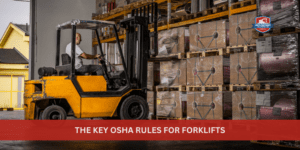
The Key OSHA Rules for Forklifts
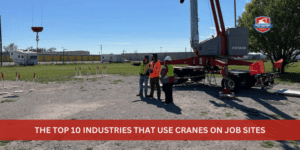
The Top 10 Industries That Use Cranes on Job Sites
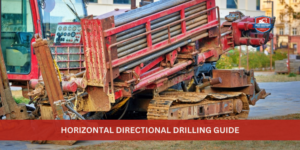
The Complete Industrial Guide to Horizontal Directional Drilling
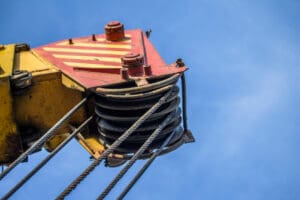
The Hazards of Crane Two-Blocking and How to Mitigate Them
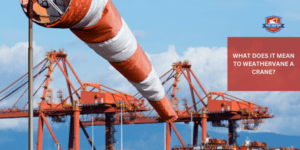
What Does It Mean to Weathervane a Crane?
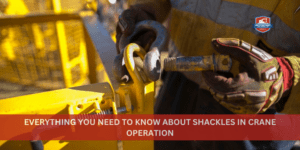
Everything You Need to Know About Shackles in Crane Operation
Dismantling
Dismantling a tower crane is the same as assembling it, just reverse.
However, please keep in mind: when assembly a tower crane, a job site is typically empty considering that production hasn’t started without the tower crane. But when dismantling a tower crane, the job site will be much more occupied with employees and equipment, meaning less space to break down crane components. This makes dismantling a tower crane far more complicated than assembling one.
Heavy Equipment of America Programs
If you’re looking for more information about how to operate a crane lift successfully, then be sure to check out a formalized training program on the topic of crane lift safety. We feature a lattice boom crawler crane program at HEC that allows you to master crane hand signals and beyond to land a future in the heavy equipment industry. Heavy Equipment Colleges of America feature world-class instructors that ensure your career in construction will never experience an accident or confusion around the operation of tower cranes. Join our immersive lattice boom crawl crane program today!
Disclaimer – The following information is supplemental to OSHA 1926 Subpart CC Cranes and Derricks in Construction 1926.1435 Tower Cranes



